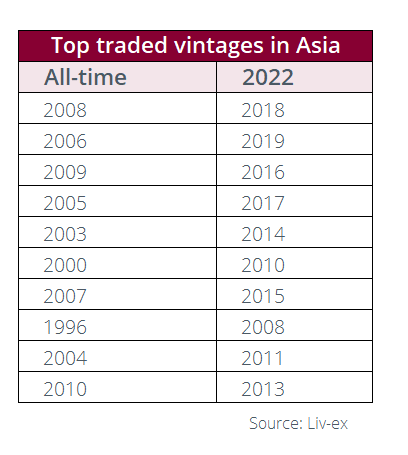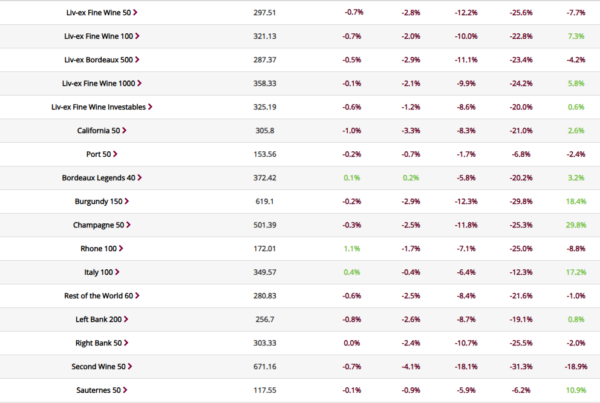- The top traded wines across key Asian markets reinforce many of the national market trends we have previously examined.
- The lists also highlight the continued importance of brand power in Asia.
- Asia is less vintage sensitive than other markets.
The following article is an extract from our report, The fine wine market in Asia-Pacific. To read the full report, click here.
Top traded wines in Asia-Pacific markets
The top traded wines (measured as LWIN7s) across key Asian markets reinforce many of the national trends examined last week; continued strength of Bordeaux in Hong Kong and the popularity of Italian wines in Singapore.
While Burgundy commands the largest share of trade in China, when looking at which individual wines have been bought the most, it is clear the likes of the ever-popular Lafite and Château Beychevelle (with its dragon-boat label), still hold enormous sway.
This in turn highlights the continued importance of brand power in Asia. Names such as Château Lafite and Mouton Rothschild, Pétrus and Domaine de la Romanée-Conti have immense traction among newer wine collectors looking for quality guarantees and kudos for good taste.
On the other hand, this is not a trait entirely unique to Asia. A look at the top-traded wines in the UK or USA would also show many of the same names.
Where Asia and many Western markets differ though is which vintages of these famous names they choose to buy.




*The tables above show the top traded wines from each country on Liv-ex by LWIN7. LWINs are unique 7, 11, 16 or 18-digit codes. The 7-digit code refers to the wine itself (i.e. the producer and brand, grape or vineyard). The longer codes include information about the vintage, bottle and pack size.
Top vintages traded in Asia-Pacific
Where Asia is strikingly different, is that it can be less vintage sensitive than other markets. With many buyers acquiring wines as an indicator of personal wealth or for gift-giving, vintage variation is at times less of a concern than it is in the UK or USA, where collectors will often stay away from weaker vintages and make a play for the best-rated.
This is reflected in the table of best-selling vintages below. For example, trade for the 2007 vintage in the ‘all time’ column was driven predominantly by trade for the Bordeaux First Growths. Despite being one of Bordeaux’s poorer vintages of the last two decades, with some of the lower scores for the First Growths (Robert Parker once rated Mouton Rothschild 88-points), it is the seventh best-selling vintage in Asia since 2004.
Similarly, last year’s best-sellers include wines from the 2017 and 2011 vintages. Neither vintage in Bordeaux excited major critics, but what ‘off’ vintages such as these provide is a (relatively) affordable point of entry to famous regions and brands – something Asian buyers have taken full advantage of.
Meanwhile, vintages with the number ‘8’ often do well because of the number’s lucky aura – something producers have pandered to, Lafite branding the bottle of its 2008 vintage with the Chinese character for example.

*The table in this article has been updated with 2022 figures. The report contains data up to October 2022.
The full report contains additional Liv-ex research and analysis on:
- Fine wine as an investment
- The development of fine wine investment
- The secondary fine wine market’s development within Asia-Pacific
- Changes in the Asia-Pacific market



